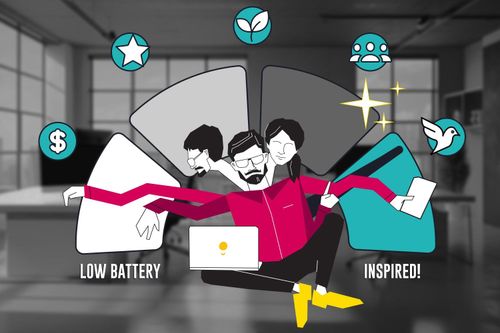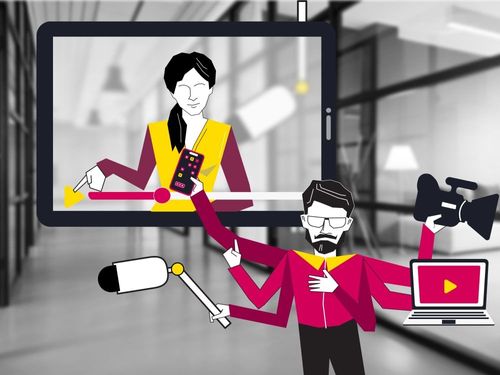
You might not notice it right away. No loud demands, no red flags at first. Yet the effect is the same: tension, quiet resistance, burnout. This is quiet management — the constant pressure remote teams feel every day.
Why Quiet Management Thrives in Remote Culture
The pandemic led to the rise in remote work and blurred work-life boundaries. During COVID, 22–35% of workers reported depression symptoms. More check-ins, more just checking in messages, and more focus on who's online when. Many managers thought they were being caring and supportive, but they were just being overbearing.
In fact, in 2024–2025, tech teams admit that bad management and weak leadership are the top reasons for quitting. Employees felt watched: green dots, frequent pings, and performance metrics flooding dashboards, but not trusted.
Ever felt your check-ins are doing more harm than help?
Let’s unpack why quiet management is dangerous — and how to spot it before your team falls apart.
Micromanagement vs Quiet Management
Micromanaging is transparent: “Do it my way, now.” You see every move, correct every detail. (You can test yourself on micromanagement here Are you a Micromanager Quiz?)
Quiet managing is softer: “Just checking in.” “I thought maybe tweak this.” Frequent nudges rather than commands.
Quiet management can feel like teamwork, and it’s often masked as care. But over time, it erodes trust just as much as overt control.
Neither is better; they can both be bad if you're not careful. So, how do you lead without stopping people from taking initiative?
Why Quiet Management Is Especially Harmful for Remote Work?
Remote work didn't just change where people worked; it changed how they work. Employee lost proximity, but mental closeness stayed — the sense that a leader is just a few clicks away.
This matters because it hits where it hurts most — team energy, trust, and your bottom line.
1. Morale and Productivity Drop.
Nearly 6 in 10 employees say they’ve experienced micromanagement (survey by Accountemps). Most of them didn’t just shrug it off — 68% said it dragged morale down, and 55% noticed their productivity tanked., but introverts absorb pressure deeply. Quiet management
2. Turnover Intention Soars.
A study found that 24 out of 25 participants admitted that being micromanaged made them want to leave their hybrid or remote job. When trust fades, people start scanning for exits.
3. Hiring and Replacement Costs Mount.
Replacing just one person can cost around a third of their annual salary (The Work Institute). And Gallup found that 42% of people who leave say their manager or company could have done more to keep them.
To sum up, quiet management is a stealthy turnover driver that makes people leave without you even realizing it.
Quiet Managing Hits Introverts Harder
Outgoing team members might mask discomfort — but introverts absorb pressure deeply. Quiet managing creates a constant demand for visibility: share more, present more, respond faster.
That spotlight drains energy. Introverts may:Introverts' engagement is often the first thing to slip
- hesitate to speak up
- decline to volunteer ideas
- retreat quietly
Introverts often carry strong analytical thinking, deep focus, and creative insights — the kind of value that makes remote teams thrive. When quiet management drains their energy, you lose some of the team’s sharpest ideas.
That’s why paying attention to how you manage introverts isn’t just empathy — it’s smart leadership. The introvert's engagement is often the first thing to slip, but the last to be spotted.
The Quiet Manager’s Symptoms: 6 Signs You're Doing It Without Realising
“Are you a Quiet manager?”. Ask yourself:
- Do I ask for status updates multiple times a day, even when no blocker is reported?
- Am I giving unsolicited micro-feedback on team members’ work?
- Do I correct or rework things instead of delegating?
- Do I justify close oversight as “help” or “support”?
- Do people hesitate to make decisions without my approval?
If you answered “yes”
0–1 True — You lean toward healthy leadership.
2–3 True — You may be drifting into quiet control.
4–5 True — You’re in heavy micromanagement mode. Time to course-correct.
How to Flip Quiet Management Into Quiet Leadership?
We won’t pretend it’s easy to build healthy remote team leadership. But these moves helped us at Smartexe to avoid quiet management in remote teams:
- Set clear outcomes, not paths. Define what needs to be done, not how every step must be taken.
- Use real metrics, not feelings. Trust dashboards, logs, test results — not your intuition about “what they must be doing.”
- Limit check-ins. Make them scheduled and meaningful. Don’t let them become mini performance reviews. Remove “last seen,” read receipts, and too-frequent pings.
- Ask first. Don’t “help” uninvited. “Would it help if I reviewed this?” is worlds better than quietly editing someone’s code.
- Encourage voice. Build safety so people can flag issues. If you discover silence, ask — and listen.
- Walk the trust walk. Let mistakes happen. Let people experiment. Show you believe in them, not just in control. Let people decide how they deliver — not just what.
Quiet management causes problems in many remote teams, especially lately, with all the ways to watch people. It's not obvious, but it wears people down.
Lead with trust. Empower quietly. Give people room to breathe and create. Because when oversight becomes invisible pressure, you lose your best people — slowly, silently.
And finally, remember: quiet management is about subtle pressure. Micromanagement is just bossing people around.
Have you seen quiet micromanagement creep into your team? How do you balance trust and oversight in remote work?
At Smartexe, we can help you go from being controlling to being a good team player. Schedule a call, and let's discuss all terms.



















